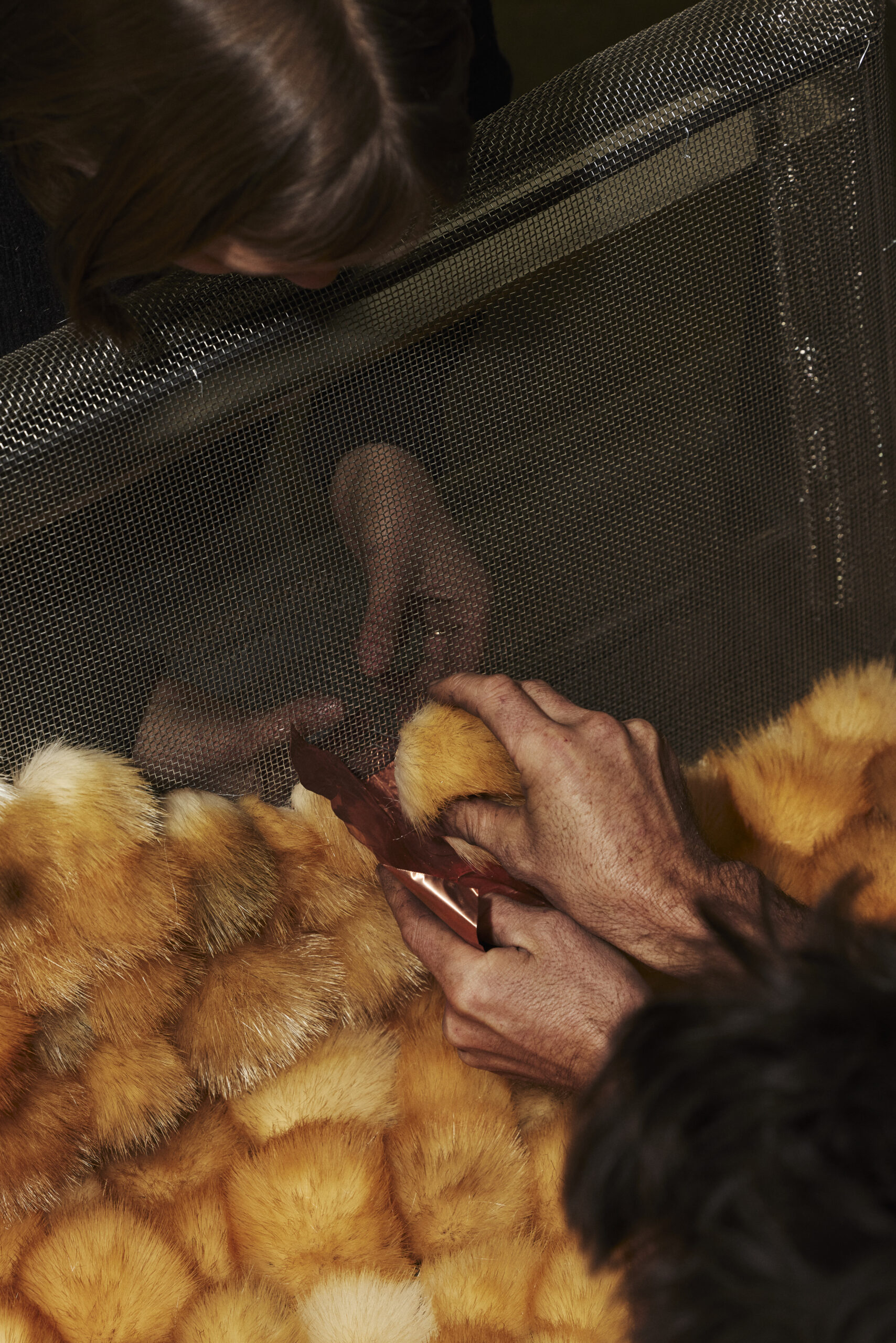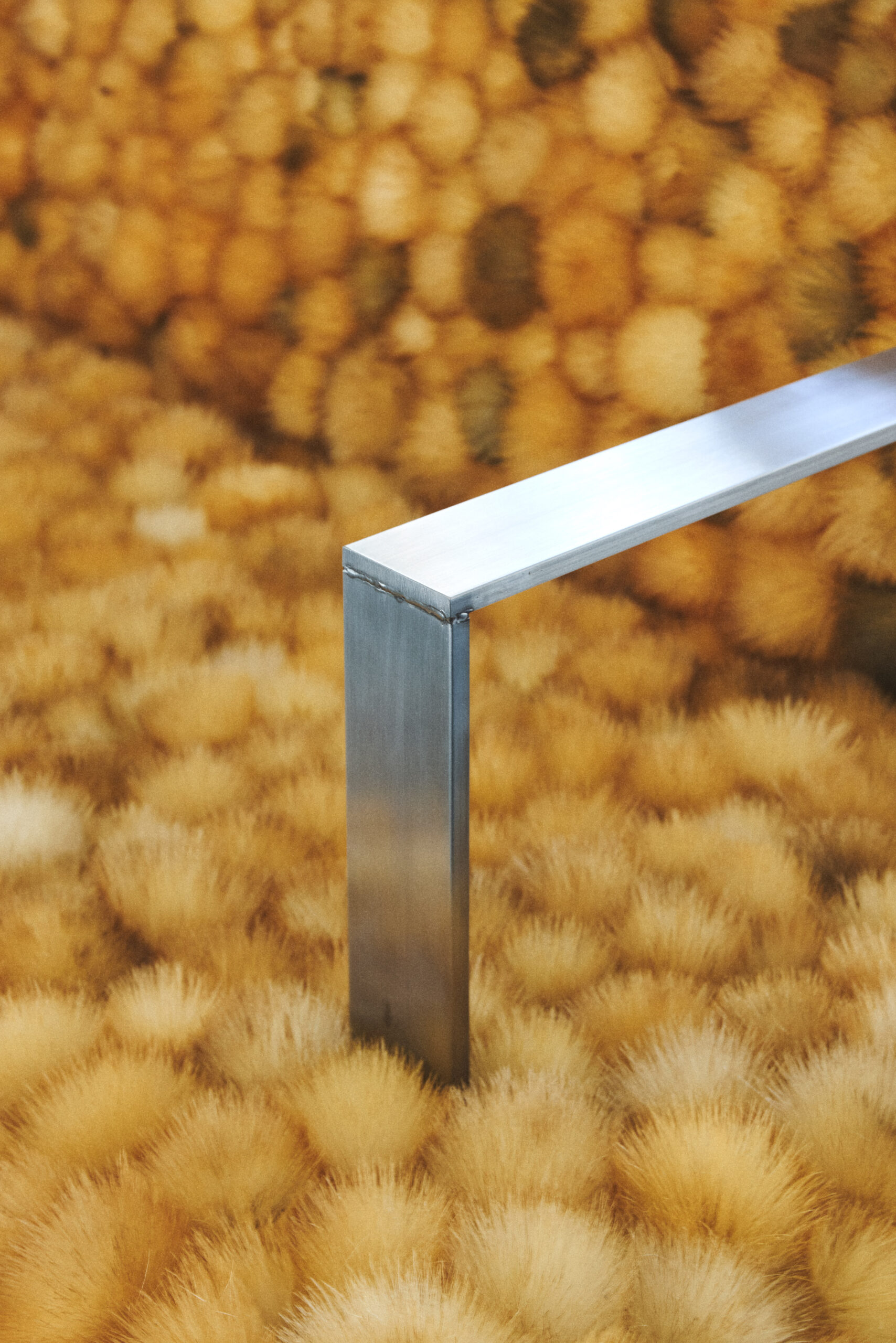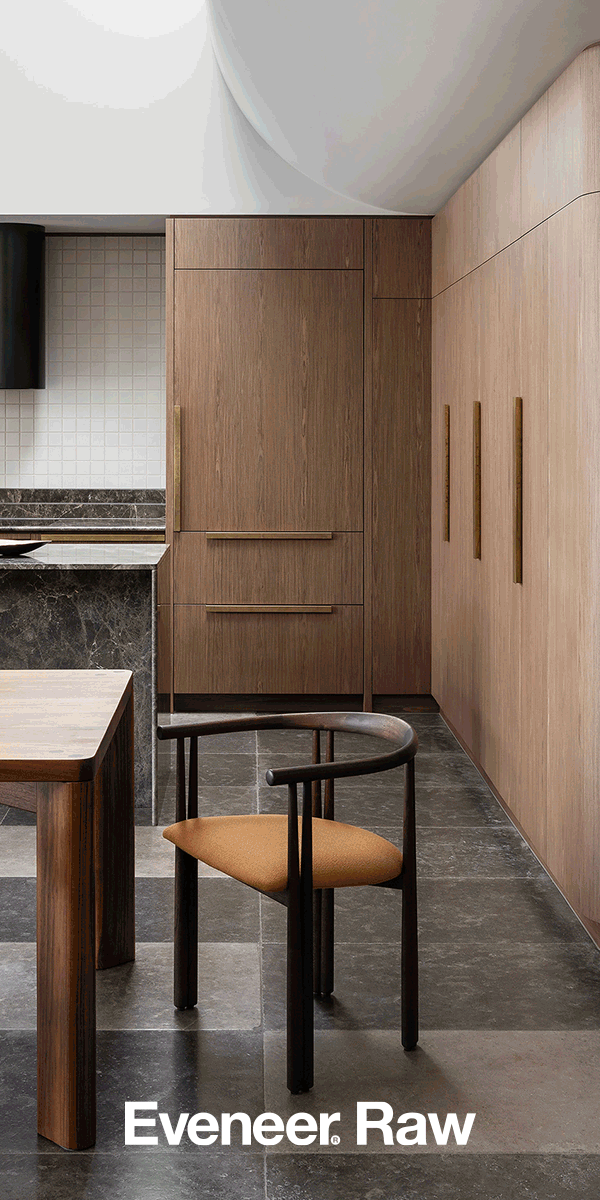Elton Group celebrates sustainable practice, fresh and diverse material expression and shares the promising future of timber veneer.
Anni Hagberg and Michael Gittings on their Thistle Chair
Artists Anni Hagberg and Michael Gittings’ Thistle Chair is the first of an evolving series of collaborations between the two, working together as Pit Projects. Their singular debut piece-cum-exhibition was presented at Melbourne Design Week 2024. UNION spoke to the pair about the nature of their collaborative process, being led by the materiality and how the piece, at once furniture and sculpture, ended up on a plinth.
Essay
Grace Sandles
Photography
Michael Pham

Grace Sandles To start, can you tell us about the inspiration behind Thistle Chair and how this concept came about?
Michael Gittings We were exploring a quarry in the middle of the night.
Anni Hagberg A disused quarry, an old one that is now quite overgrown and full of vegetation.
MG The whole bottom of the quarry was basically filled with thistles. Although we see them all the time, we had a chance to play with them, feel them and touch them. They were at the point in their lives when you could quite easily take the small, hairy, furry part out and away from the spikes. I think we laid them on the ground and thought they looked so much like fur. That experience kind of lent itself to the idea. We were like, oh, we should try and upholster something.
AH The little furry things just come off like a little hat and these thistles were huge. They were kind of my height. I could walk underneath them, and they were really just quite magical. And pulling off the little furs was very direct.
MG I think there's always something fun about making something that everyone considers useful. An object that is understandable. Then we contradicted this by using a material that is completely unusable, basically. The thistles will just be destroyed after the first sitting.
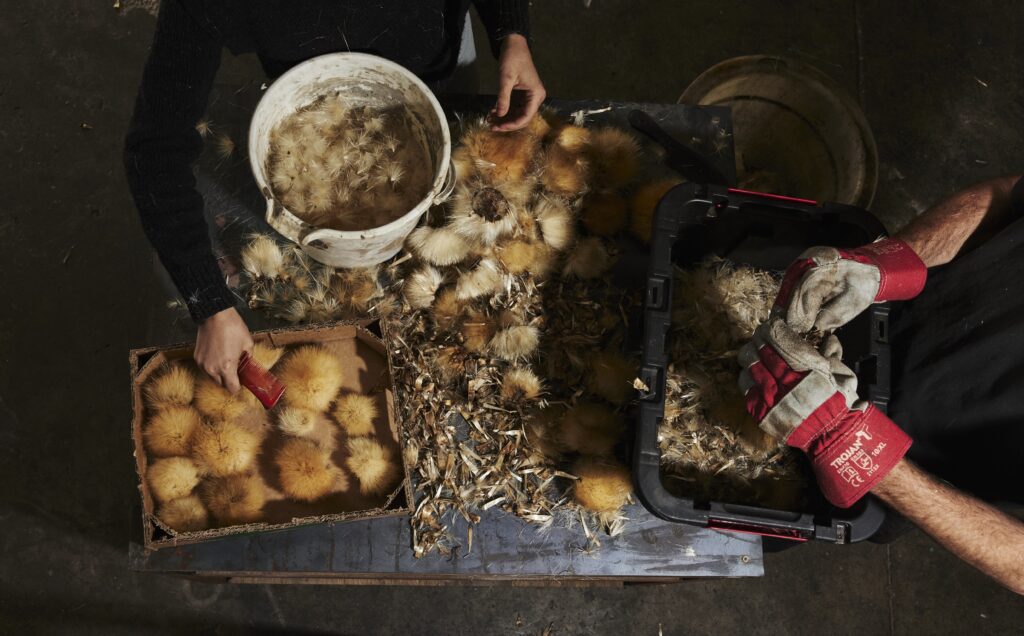
GS That’s a unique idea: a couch that is completely unusable. There are a few tensions at work in this piece: the natural, soft-looking fur and the unnatural which in this instance is the stainless steel. The couch’s material begs for tactility, but you’re also not allowed to touch it and you're not allowed to sit on it and use it. What about that kind of tension between opposites initially fascinated you?
AH I think it lures people into engaging because it is confusing. It draws you in because you're faced with assumptions about the object. The context of Design Week was a good way to explore that. Michael has a background in design, so it was a fun way to play with this 'objectness'. It’s interesting to see people approach the couch and then think, Oh, hang on, what is this? What is this material?
The couch is not useful at all. There’s no life to the object, even beyond what it is. I think that's very perplexing for people, especially considering we spent a year and a half making it. The process is as confusing as the materiality.
MG I think the other thing that's confusing people is that it's ephemeral. I think most sculptures are hard and long-lasting. This is just going to exist in this state for a very short time. The thistles are all going to go grey and brittle very soon.
GS It starts out and looks like a design piece or a furniture object, but then it's rendered completely useless. That makes it kind of sculptural, almost like art.
MG Yeah, it is.
GS Can you talk a bit about that? What does it mean specifically to turn something into an art piece by removing its functionality?
MG It's sculpture that’s posing as design. It's also the life cycle of the plant posing as a sculpture because it's only going to last as the plant basically does in nature. It's only about six months until the flowers drop off.
AH We don't know exactly how long it will last now that they're not in the elements. However, it is a really timed project and it speaks to the timed nature of the plant. It's a funny thing to use art and design. I think design is very 'ownable' in the way that we think of pieces as objects that you can acquire, own or use, even more than art. It's playing with all those notions of control, ownership and belonging.

GS In the process, did you consider the idea of the material softening, or becoming less ‘dangerous’ over time?
MG When the thistle is coloured with its blue and purple florets, the bulb that's underneath the thistle (which holds the seed pod that we've used) is much softer and less spiky. The leaves are much juicier, softer and meatier. Over time, they reveal their softness. I'm not sure if we've approached it with that in mind so much but they are just a delightfully soft and fluffy thing.
AH Essentially, when you're picking them, they are really spiky and scratchy, but you cut them off and peel off the outside spikes. Underneath there are the most beautiful puffs of fur and they're so gorgeously soft. We comb their hair like they're some kind of small animal, like a baby chicken. It was a funny kind of interaction with the material. The material is quite hostile at first, but then it becomes so soft that you subsequently have to become quite nurturing.
MG Yeah, quite tender too; they are very soft but they can also kind of kink, so you do have to cradle, caress.
GS What was the decision process for matching that softness with the stainless steel?
AH Michael has worked for a long time with stainless steel, and I think it was just a material of which we're both aware. It’s a very automatic material to work with.
MG Yeah. At the start, we were thinking about public furniture, like public benches. We were contemplating the language of furniture in some way. The material is synonymous with chairs and furniture. And you know, with the idea of the park bench, there is similarly something interesting about public seating and its uncomfortable nature.
AH I actually completely forgot that.
MG That was your idea!
AH That was my idea from the beginning, and I forgot all about it! That is where it started. Stainless-steel is also just a familiar material to work with and I think we needed to be able to create the forms that we felt would show off the volume and plushness of the thistle. That actually came from the frame, which is essentially a skeletal structure holding a stainless-steel mesh frame. With the stainless-steel, we could create this additional volume and really show off the curvature and the kind of...
MG The sumptuousness of the thistles!
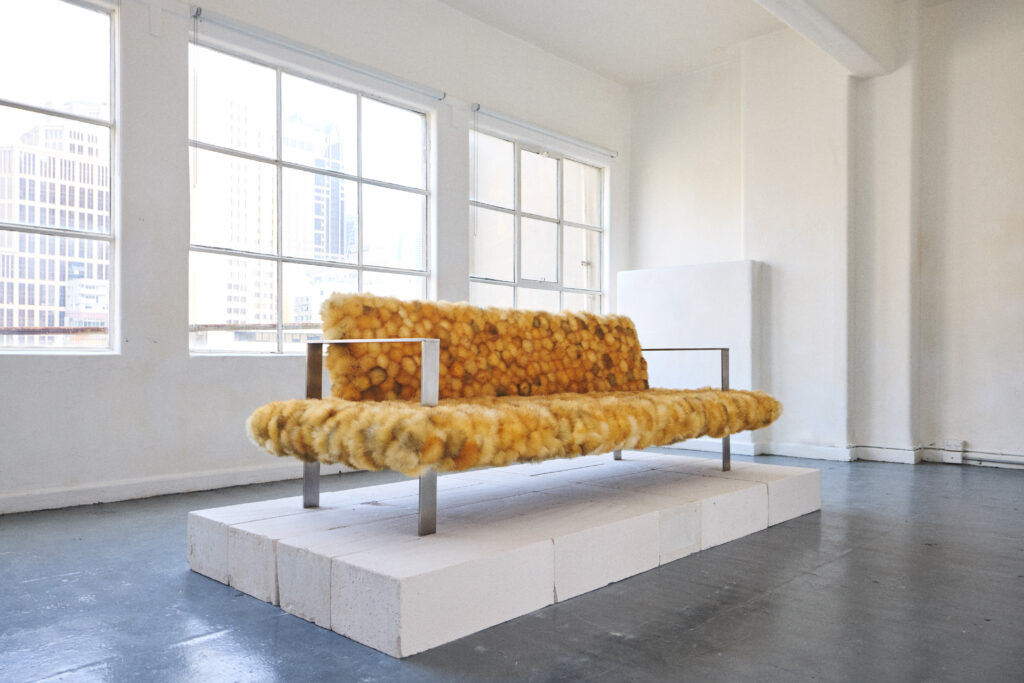
GS I think the fact that you forgot your initial idea and Michael stepped in and reminded you is a perfect segue into talking about collaboration. This is the first exhibition or piece that Pit Projects has done. Does that mean it is the beginning of you two collaborating? Or have you worked together before?
AH No, we haven’t. Quite funnily, before Michael and I even met, we'd been in an exhibition together. In a way, we had shown together without having met each other. Then later, when we eventually met, we were very engaged creatively with each other's work, not collaborating at all but aware of each other's processes. But there's been so many ideas thrown around and there will be more collaborations. There is a fun dynamic between our very separate creative practices. It’s a completely free and different space to work in, which obviously borrows from and lends to both of our practices.
MG I'd agree with that completely. It feels bigger. We're generating ideas together all the time. It's not one person coming in with an idea for the other one to build on. All the idea are conceived together and then executed completely collaboratively. It’s not about using the other person to bring about an idea.
GS You installed the piece on a raised platform. Why did you choose to work on a single piece and position it like that? And why Design Week?
AH I think the Design Week thing was very practical in its timing. It was also thistle season in January and February, so it worked well. Design Week gave us enough time to pick the thistle and do all the making. In terms of the exhibition, it's been an enormously labour-intensive project and I think it wasn't about creating a narrative as such. It was about capturing a moment of this enormous project and sharing it. The couch is a symbol for the whole process, and so it’s not trying to be positioned as an exhibition about ecology, even though it is, of course, about all of those things. It's really about the couch. That’s why it's been presented completely on its own, void of additional context or fancy visuals. Even the plinth was added as a practical decision to stop people from trying to sit on it.
